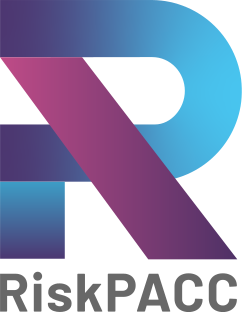“Comparative analysis of the European diversity in terms of risk-
perception amongst citizens, and of vulnerabilities”
WPs 1 and 2 will undertake desk-based research to gain insights on levels of risk-perception and vulnerability across Europe. RiskPACC develops a
methodology that facilitates a structured dialogue between CPAs and citizens to discuss aspects of vulnerability and risk perception. The 7 RiskPACC case
studies will include interview-based baseline assessments and semi-quantitative evaluation activities using rating mechanisms that will highlight the
diversity in risk perception and vulnerabilities across Europe and how they could potentially impact the implementation of the RiskPACC solutions
“Advances through the cross-fertilisation of concepts resulting from the
collision of different ways of thinking and of different approaches
developed by various partners in the proposals”
RiskPACC ensures cross-fertilisation through the participation of multidisciplinary RiskPACC partners including government and municipal authorities, first
responders, CSOs, sociologists, psychologists political scientists, geographers, computer scientists and engineers, who have extensive experience in the
field of disaster resilience. RiskPACC integrates RTOs, Universities, SMEs and end-user partners ranging from crisis centres (IBZ) to firefighting organisations
and NGOs such as Magen David Adom (MDA) and ISAR. The framework and methodology for closing the RPAG will build on existing research from a range
of disciplines that partners have expertise in. Additionally, co-creating processes with CPAs, citizens and first responders to bridge the RPAG is a key aspect of the project
“Comparative analysis of different approaches to adapt to, and be
prepared for risks in different countries (both within and outside the
European Union), and among communities in precarious socio-economic conditions”
RiskPACC collects good CPA- (top-down) and citizen-driven (bottom up) approaches from around the world to ensure cultural diversity and different socio-
economic conditions are adequately reflected. Similarly, it aims to establish a repository on technologies and practices available to enhance collaboration
in all four disaster resilience phases. Based on an initial assessment of needs, aims, vulnerabilities and other relevant factors, citizens and CPAs decide in a
co-creation approach about the tools they want to use in their collaboration and the adaptation requirements for technologies and established procedures
“Identification of existing tools and guidelines for an improved
prevention (including risk understanding and communication),
preparedness (including training involving citizens), alert systems and
their recognition by citizens, responses)”
Gathering and building upon existing knowledge to develop our own findings runs deeply throughout the project structure. RiskPACC collects best practices
from around the world in terms of approaches and tools that aim to enhance the collaboration between CPAs and citizens (WP1 and WP2). These
approaches and tools will be evaluated and translated into a repository of good practices (WP4 and WP5). Training on closing the RPAG is developed within
WP3 (on co-creation methodology) and WP4 (on closing the RPAG) to facilitate CPA and citizen collaboration
“Field-validation of different approaches related to different disaster
risks involving the above actors, in representative urban and non-urban
environments, including in areas where precarious socio-economic
conditions prevail”
Through its cooperative co-creation process, RiskPACC also employs a fieldcentric approach. The 7 case studies provide the lab-context in which needs
are defined and solutions are developed jointly, and tested in co-creation sessions involving multiple actors. Each case study represents a slightly
different angle of the RPAG and relates to a different hazard context e.g. pandemics, earthquakes and wildfires, as well as contexts where multiple
hazards are found.
The case studies represent urban (such as the Efus cities) and rural areas (such as the Olomouc and Moravian-Silesian Region in the Czech Republic) as
well as covering a variety of different cultural and socio-economic contexts including highly industrialised areas as well as agricultural-based locations
“Improved information exchanges among different actors involved,
including first responders, local authorities, schools, and citizen
representatives”
RiskPACC facilitates the exchange of information between CPAs and citizens through the co-creation approach that is built into the project design and framework.
In specially designed interactive formats, building on the methodological expertise of the consortium, it brings together different actors for needs assessments and
the collaborative design of solutions to close the RPAG. These actors will encompass CPAs, citizens, volunteers, NGOs, as well local authorities and schools.
All these actors are reflected by the project consortium and the envisaged case studies
“Intensive sharing, among communities, of good practices and of
learnings resulting from citizen-scientist interaction”
RiskPACC follows not only a citizen-scientist approach but aims to bring together CPAs, citizens and first responders in co-creation formats to design DRM
strategies collaboratively and on equal basis. Co-creation approaches as well as the applied technologies are firmly based on scientific insights and developments.
Furthermore, by applying modern technologies and solutions in new contexts, RiskPACC enhances inter-communal exchange based on its toolbox of solutions.
Tasks covering the case study knowledge exchange, repository of good practices, development of white papers, and awareness workshops will facilitate the intensive
sharing of knowledge and international good practices
“A consolidated, common European understanding of disaster resilience”
RiskPACC will advance current understandings of disaster resilience by drawing on social science, humanities, technical, human geography, and human
factors concepts for the framework development and co-creation of RiskPACC solutions. WPs 1 and 2 will examine current understandings and
definitions of disaster resilience from the CPA and citizen perspectives. The RiskPACC cocreation approach implemented in the 7 case studies will
advance current knowledge of disaster resilience beyond the state of the art through the baseline and needs assessments and evaluation activities that
will seek to understand how different contexts and vulnerabilities influence disaster resilience
This project has received funding from the European Union’s Horizon 2020 research and innovation programme under grant agreement No. 101019707. This webpage reflects only the author’s view and the Research Executive Agency (REA) and European Commission cannot be held responsible for any use that may be made of the information it contains.
